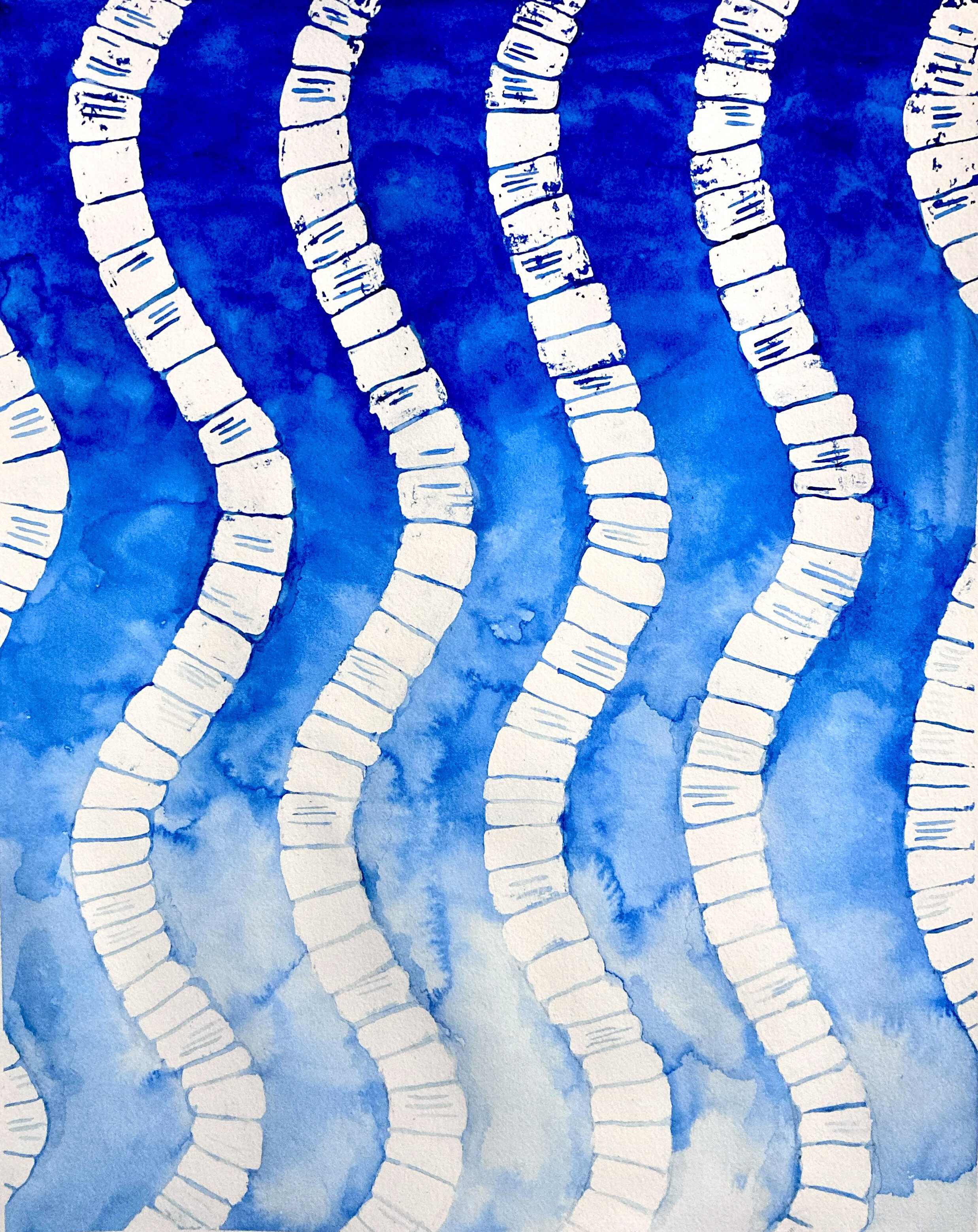
Spirulina Blue
Spirulina, the common name for a variety of Arthrospira cyanobacteria, is a type of blue-green algae, or cyanobacteria, that grow in alkaline conditions. Found in a variety of places around the world, spirulina is gaining in popularity as a “superfood” for its high nutritional value. Spirulina has been the subject of scientific experiments on space missions, used as alternative livestock feed, and has a growing interest as a sustainable food source.
Spirulina also can be a source of bright blue food coloring. Currently, most food dyes are petroleum-derived, with blues being particularly hard to synthesize. Cyanobacteria like spirulina contain phycobilins, meaning ‘algae bile,’ that present as brilliant colors. Spirulina’s bright blue readily extracts into water presenting the potential for future art materials.
Spirulina Waves - Spirulina pigment on paper, 2021
Grow & Observe
Spirulina was my first experiment and my first microalgae on what has become my rotating algae farm. I was first introduced to spirulina through an algae pigment class I took online via GenSpace and Spira, Inc. that outlined the science and pigment extraction process.
As part of this class, I was provided a live algae colony to grow. After some trial and error and careful pH testing, I was able to successfully grow the spirulina colony. Since January 2021 I’ve been growing spirulina at home and have done several cell harvests for pigment extraction. I’ve also observed the organisms under the microscope. My spirulina is likely Arthrospira platensis, the most common species of spirulina used for food products.
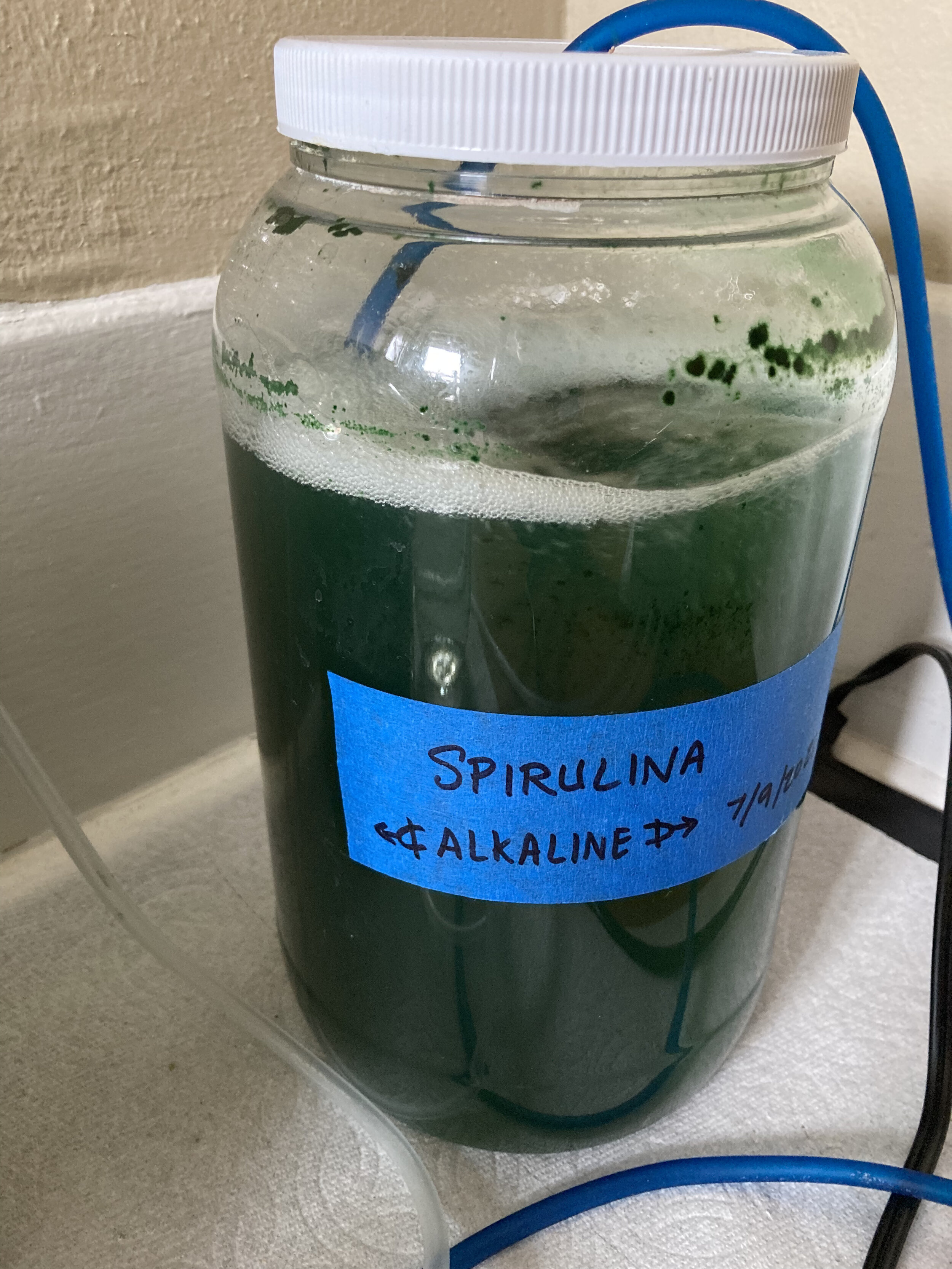
Spirulina in its bioreactor
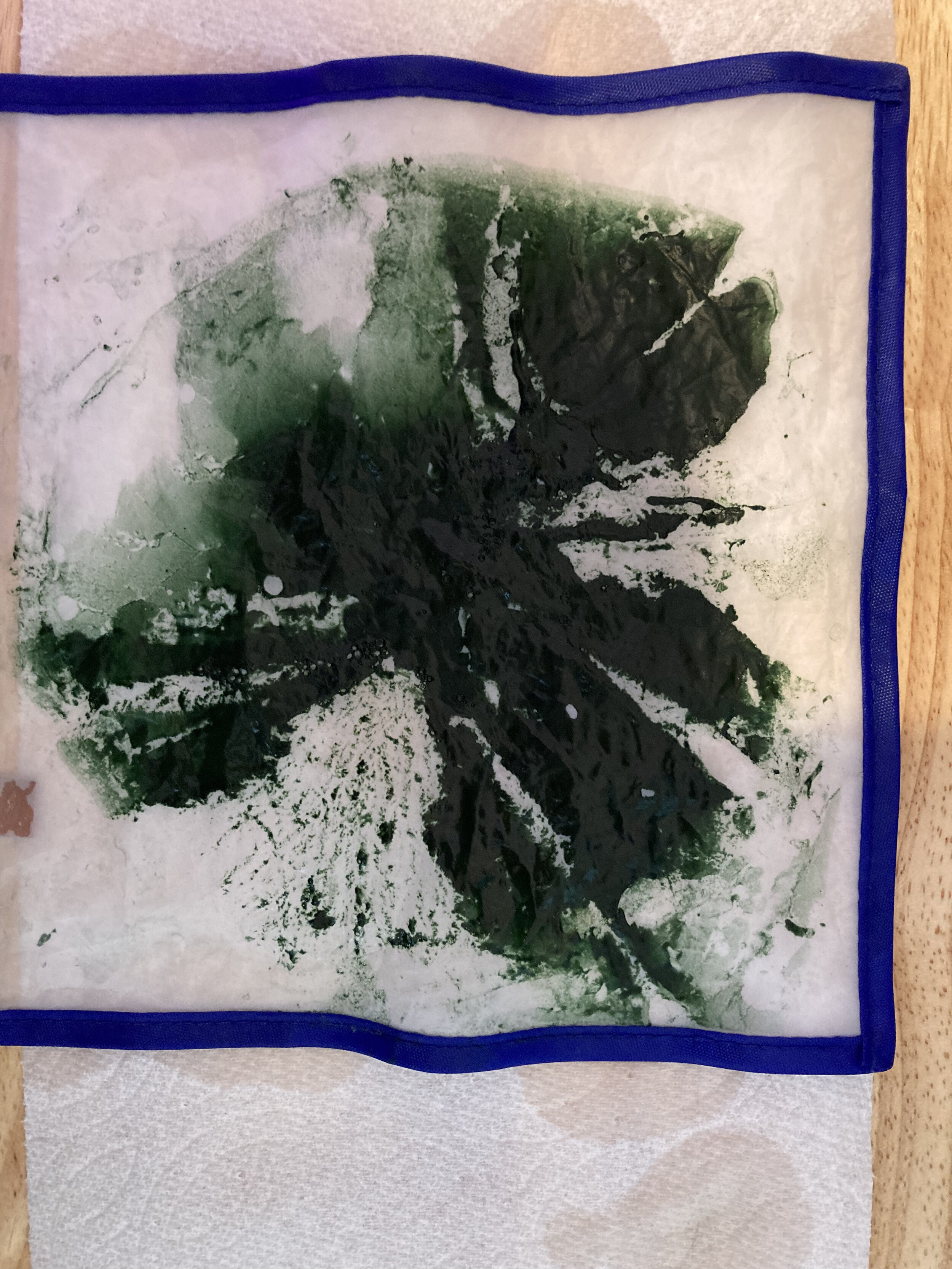
Typical spirulina harvest

Spirulina at 100x magnification

Spirulina at 400x magnificiation
Extract Pigment
Unfortunately, extracting enough pigment to use in a project requires many billions of cells. Although I am using cells from my algae farm, I rely on industrially grown sources to do full pigment extractions.
Spirulina’s blue phycobilin, and cyanobacteria’s ‘cyan’ namesake, is readily extractable into water. After lysing the cells to further break down the cell structure, the spirulina can be filtered, resulting in pigment slurry, essentially blue spirulina tea. Ammonium sulfate is then used to ‘salt out’ the blue pigment from the cell debris, resulting in crude blue pigment.
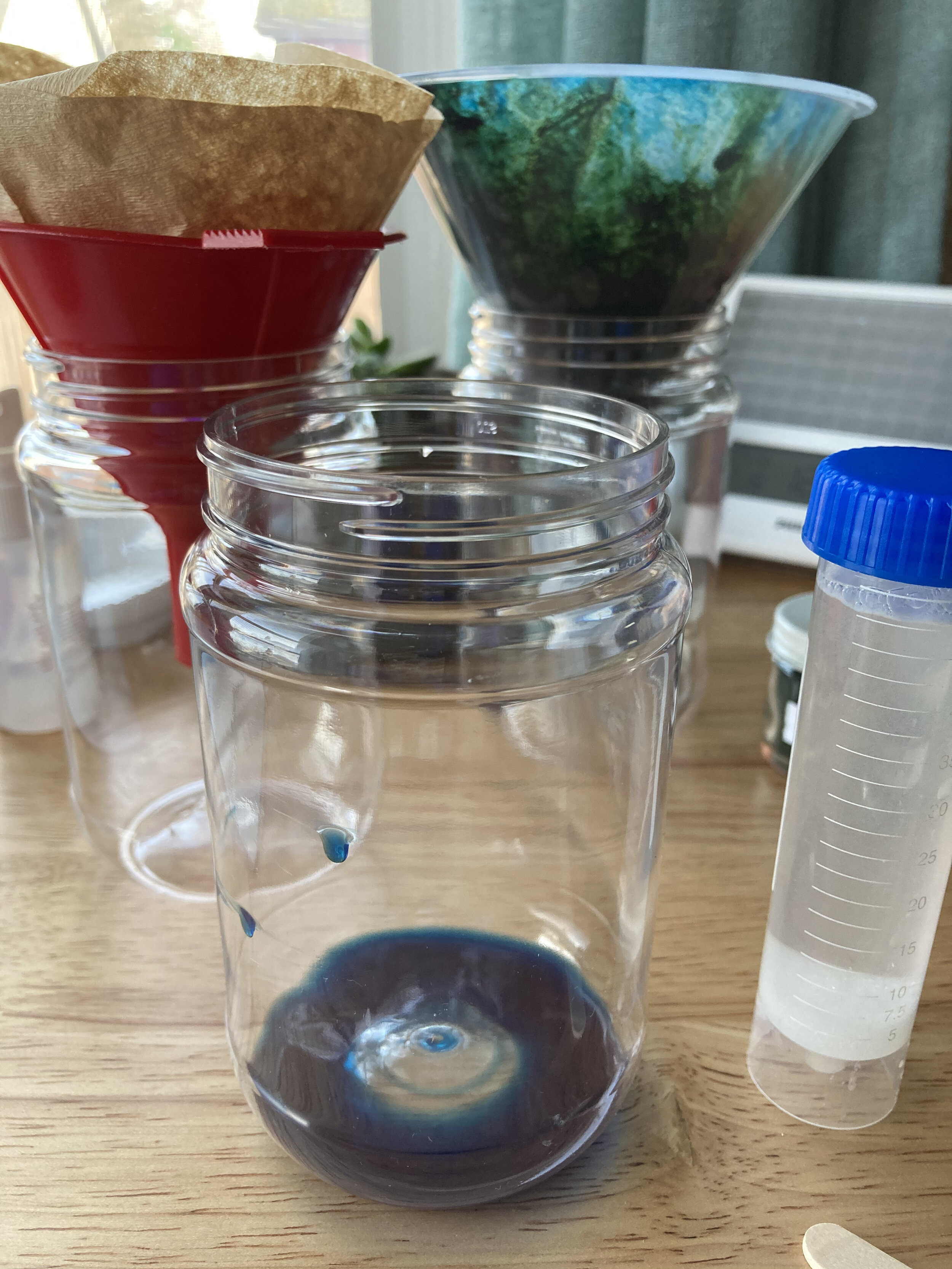
Filtered phycobilin from spirulina
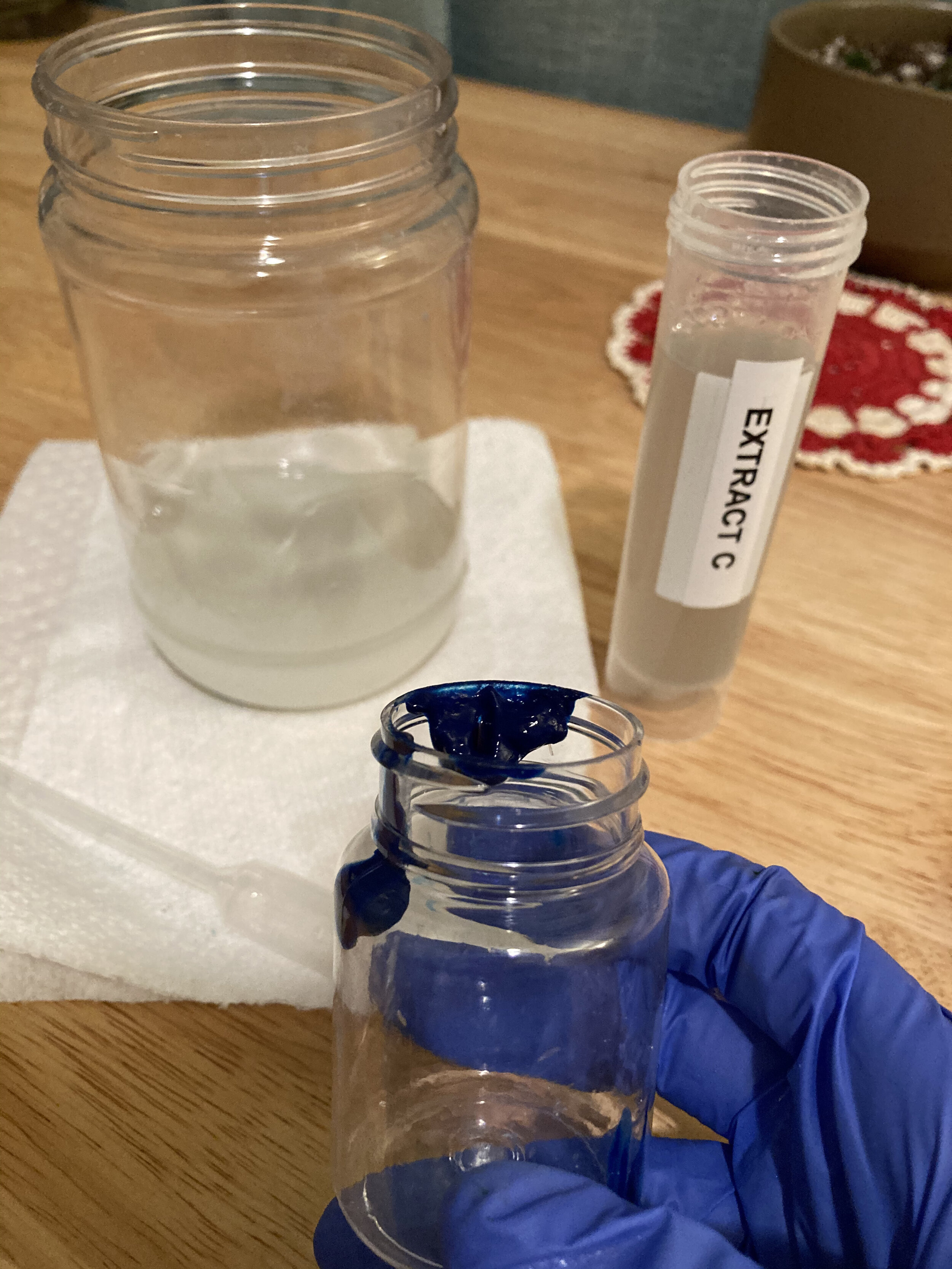
Blue pigment after second filtration
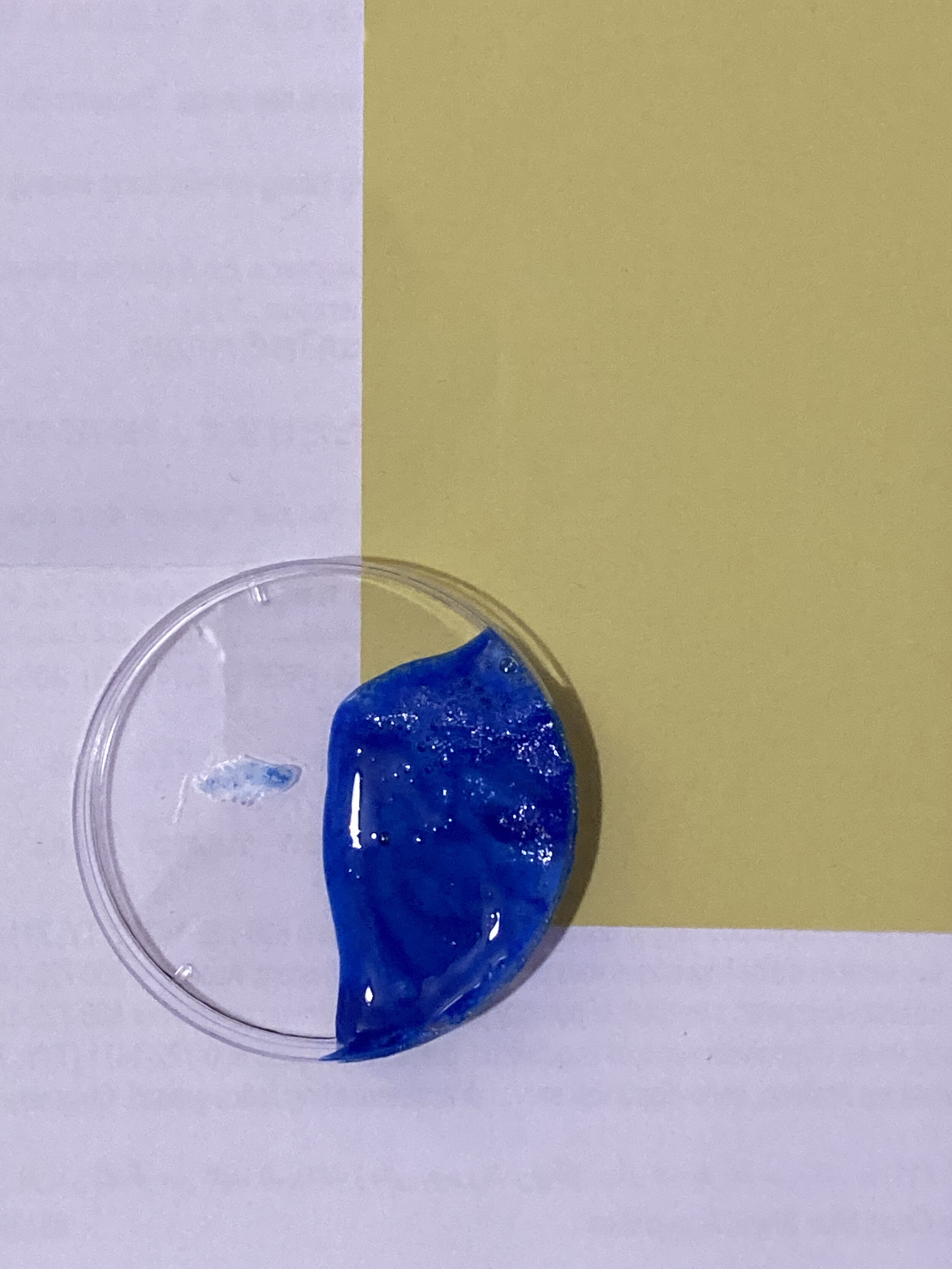
Final crude blue pigment

Filtered blue after protein bonding
Color Experiments
The resulting pigment extraction provides a very small amount of pigment. Again, I must rely on industrially extracted pigments to make full pieces. Using both my extracted pigment and powdered pigment, I mixed the raw color into a watercolor base and made a professional paint.
Using this paint, I experimented with the materials to get a feel for how the resulting paint behaves. The result is an easy to work with brilliant blue that gives the resulting paintings a very watery feel.
Unfortunately, spirulina pigment is not lightfast and is fading over time. I see this as a benefit as well, providing a living biomarker of the organism.
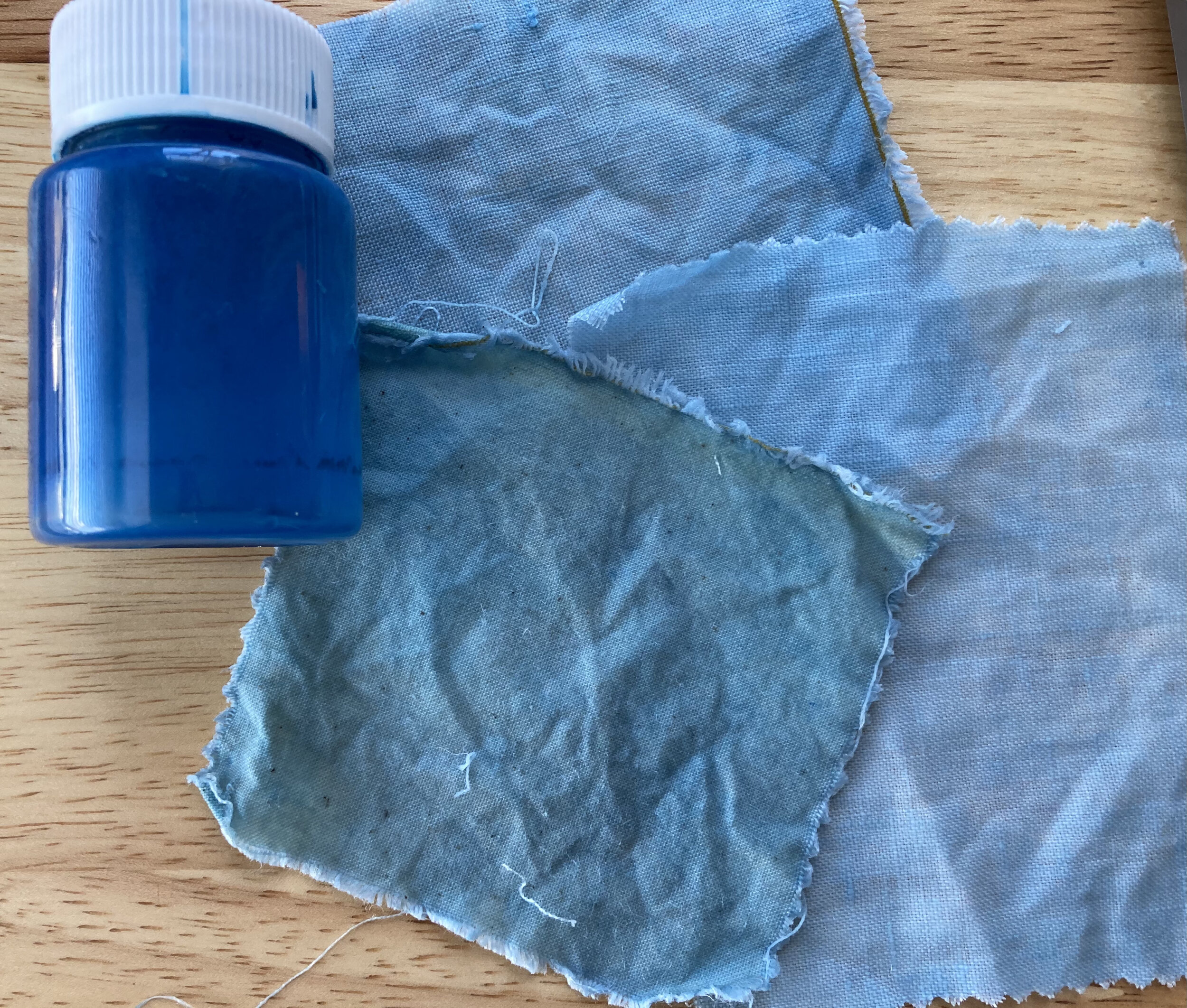
Spirulina dye tests with fabrics using extracted and industrial pigments
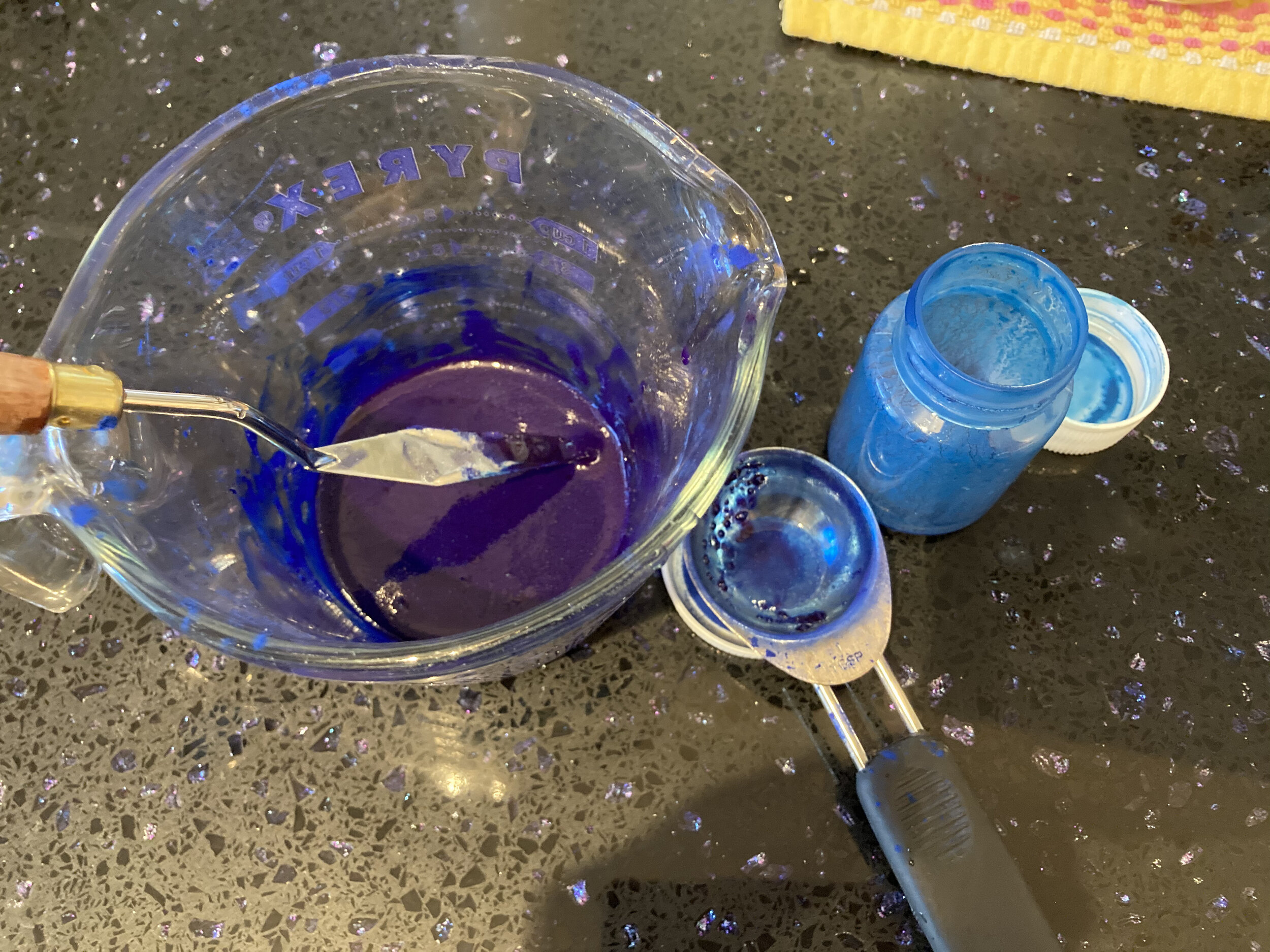
Mixing the watercolor paint
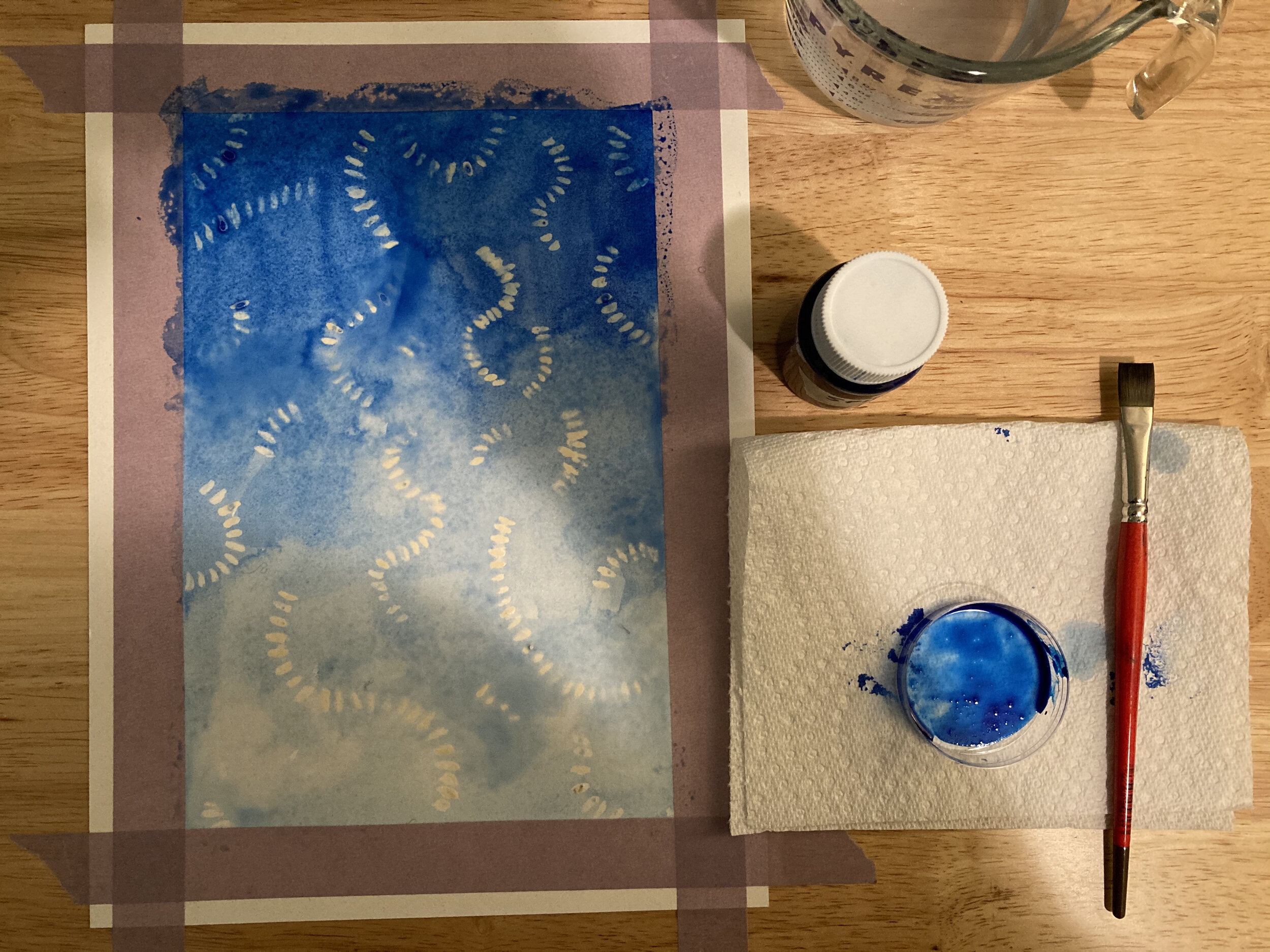
Materials test work in progress using spirulina watercolor
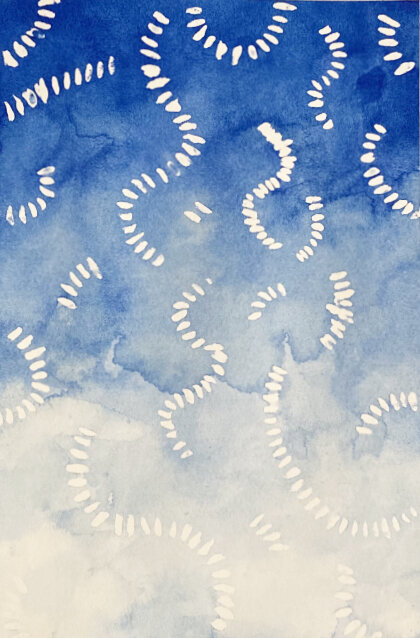
Materials test result
